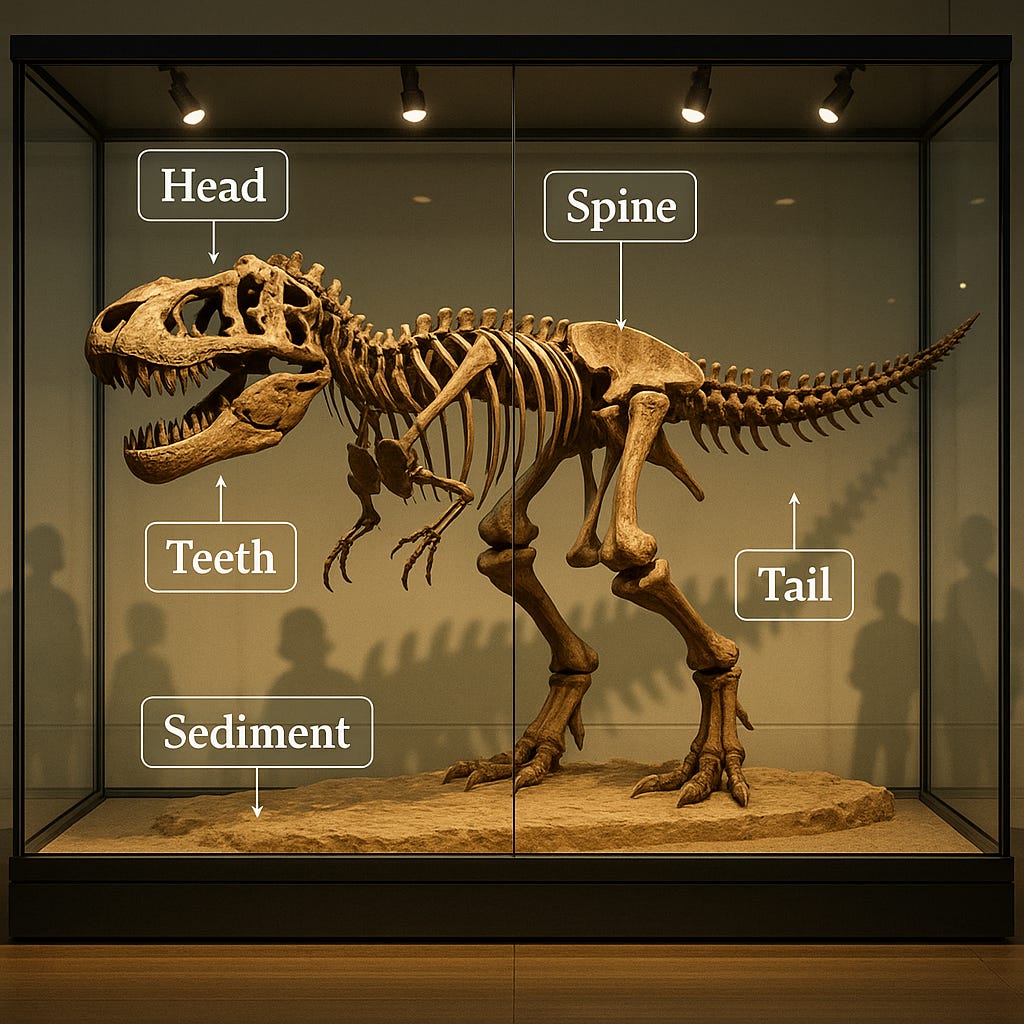How to Ace Google’s Data Analysis and Intuition Interview
The Fossil Method: A step-by-step method for breaking down ambiguous problems before you try to solve them.
TL;DR
The Fossil Method has five parts you uncover before you try to solve:
Head – the decision and the single outcome that define success.
Teeth – the comparison that makes the result credible.
Spine – the metric tree that holds the body together and keeps you from chasing false wins.
Tail – the risks that whip your conclusion sideways.
Sediment – the context that buries everything in time, market, and scope.
Make the call when Head, Teeth, and Spine are visible.
Pause if a missing Tail or Sediment could flip the answer.
Aanjoo
Two months out of work, and Aanjoo still woke like she had meetings to run. Old reflexes die hard. Principal Data Scientist. Ten years in the industry. The kind of résumé that usually draws headhunters like moths to warm SQL.
She was in sweatpants, half-cold coffee in hand, staring at the glow of her inbox.
From: Google.
Subject: Next Steps in Your Interview Process.
Her stomach clenched. This was the Data Analysis and Intuition round. The one that looks like a puzzle for three seconds, until you realize it’s more like being asked to find a black cat in a coal mine at midnight.
Here is one from the prep material:
“We offered users 10% off at the Google Play store last weekend. How can we determine if this promotion was successful or not?”
That is all you get.
No context. No numbers. No “hint: look here.” Just a sentence daring you to jump.
Most people do. They chase the answer like it’s a train already leaving the station.
But you don’t chase here.
You stop.
You study.
You listen for the quiet rattle underneath.
Because this kind of question isn’t a problem to solve—it’s a fossil. You don’t yank it out. You brush around the edges, slow enough that the bones tell you what you’re really digging up.
What This Interview Is Really Testing
On paper, it looks like another business case. In practice, it is not.
This round measures how you handle problems that are incomplete by design.
What they are watching for:
Can you turn chaos into structure before you solve?
Can you surface your assumptions and state them clearly?
Can you critique your own plan as you go?
Can you move forward even when a perfect answer is not possible?
Most candidates hear the question and start swinging. Ten minutes later, they’re arguing with their own shadows.
That’s the trap.
Introducing the Fossil Method
The Fossil Method is not about solving. It is about forcing the problem to show its shape before you touch it.
When Aanjoo’s interview began, the prompt was a single line:
“Over the past month, engagement with one of our core mobile apps has dropped by 8%. How would you figure out what is going on?”
One line. Barely enough to stand on. Exactly how they wanted it.
The fossil has five parts: Head, Teeth, Spine, Tail, and Sediment.
Your job is to uncover enough of these to define the problem precisely.
Here is how Aanjoo applied it.
1) The Head
The decision and the single outcome that decides it
The head tells you what kind of creature you are dealing with.
In analysis, it is the decision you are making and the one measure that defines success. Without it, you can be busy without being effective.
Questions to ask
“What decision do you want to make from this analysis”
“What is the single most important outcome that drives that decision”
“What is the time frame for that outcome”
“Who owns the decision”
Aanjoo: “Before I start pulling logs, what is the actual call you need to make here?”
Interviewer: “Whether to intervene now or wait and monitor.”
Aanjoo: “And what is the success measure for that decision?”
Interviewer: “Back to baseline within the next two months.”
Aanjoo: “Got it. So the decision is to intervene or not, judged by whether engagement returns to baseline within two months.”
Field note: We will decide X, judged by Y over Z days, owned by Name.
2) The Teeth
The counterfactual
Teeth show how the fossil bit.
Keep reading with a 7-day free trial
Subscribe to The Conscious Leader to keep reading this post and get 7 days of free access to the full post archives.


